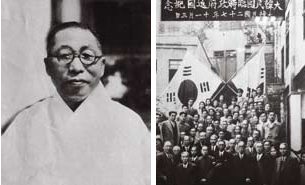Bungeoppang is a delicious snack food perfect for winter in korea
Bungeo-ppang (붕어빵;
"carp") is a waffle-like cake in the shape of a goldfish popular in
Korea. Bungeo-ppang is sweet and sticky because it is filled with red bean
paste. Some hawkers offer bungeo-ppang filled with custard cream, which is
called “chou-cream bungeoppang”. Bungeo-ppang is made by baking using a tool
similar to a waffle iron mold, but the mold is a goldfish. Bungeo-ppang is
often sold as street food, especially during winter.
"Bungeo" means goldfish and
"ppang" refers to bread in Korean. Its name comes from its fish-like
shape, but the snack contains absolutely no fish.
Bungeo-ppang is said to have originated
in taiyaki in Japan, a fish-shaped snack that was first developed in the late
19th century. The Korean version is smaller and cheaper than the original,
taiyaki. According to the book Bungeoppang Has a Family Tree written by Yoon
Deok-no, bungeo-ppang is "a combination of waffles from Western countries
and dumplings from Eastern countries". The origin of this snack stems from
the waffles that were modified by the Japanese after their introduction there
in the 18th century. The book, published in 2011, traces root to more than 48
types of popular Korean street food - including tteokbokki, sundae, hotteok and
gimbap.
Recently, more people are looking for
bungeo-ppang. So, to provide information about the remaining stalls, fans
across the country created "bungeoppang maps." Through Google Maps,
users mark kiosk locations with brief reviews, prices, opening hours, and share
details with others.
A common winter street scene in Korea is
food carts selling bungeoppang on street corners. Bungeoppang is made by
pouring flour mixture into a bungeo (goldfish) black iron mold and filling it
with red bean paste. Bungeoppang can vary slightly in shape and color depending
on the amount of flour used and the baking time, but it's always a
crowd-pleasing flavor.
For many Koreans, the sight of freshly
baked bungeoppang and its sweet aroma permeating the cold air is a signal that
winter has truly arrived. Today, you can find various types of bungeoppang such
as ingeoppang (mini bungeoppang) and bungeoppang which are filled with
ingredients other than the traditional red bean paste. Prices vary by region,
but 3 to 5 bungeoppangs usually sell for 2,000 won.






Komentar
Posting Komentar